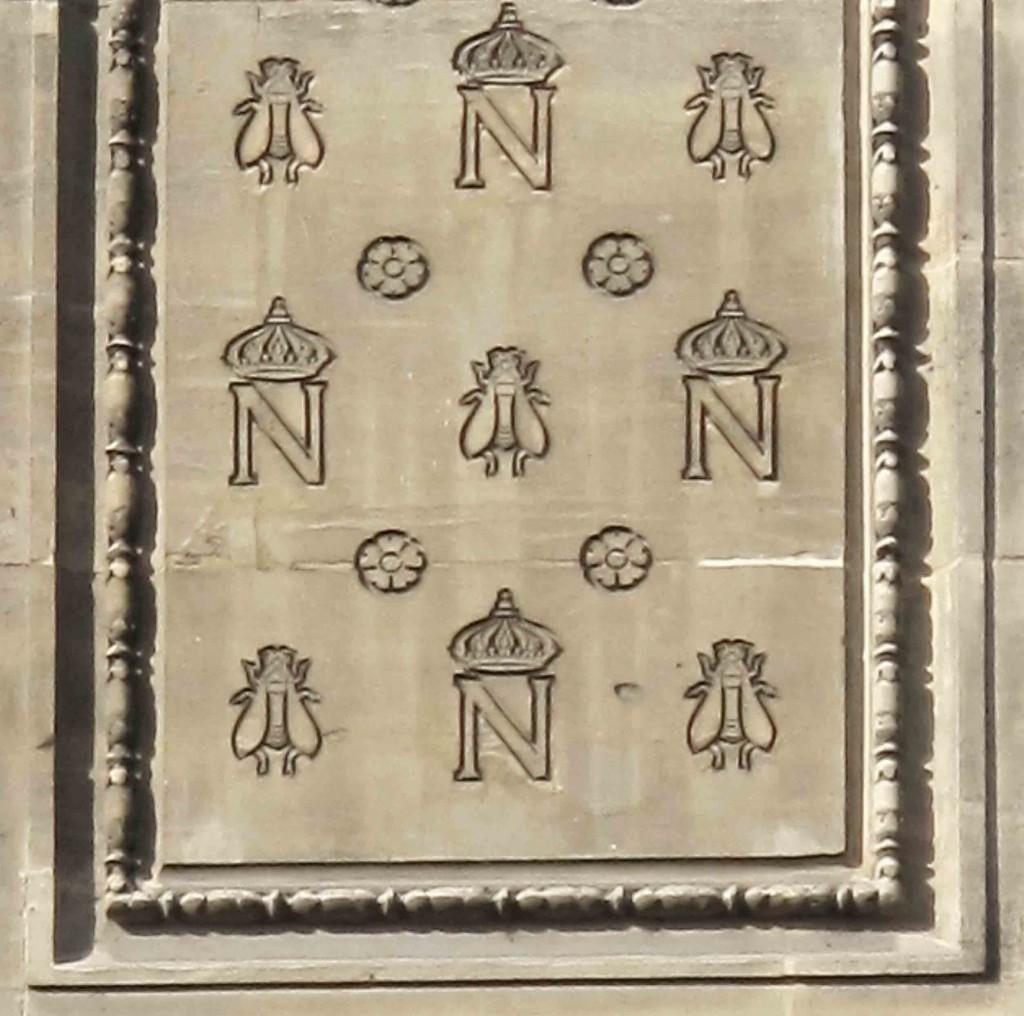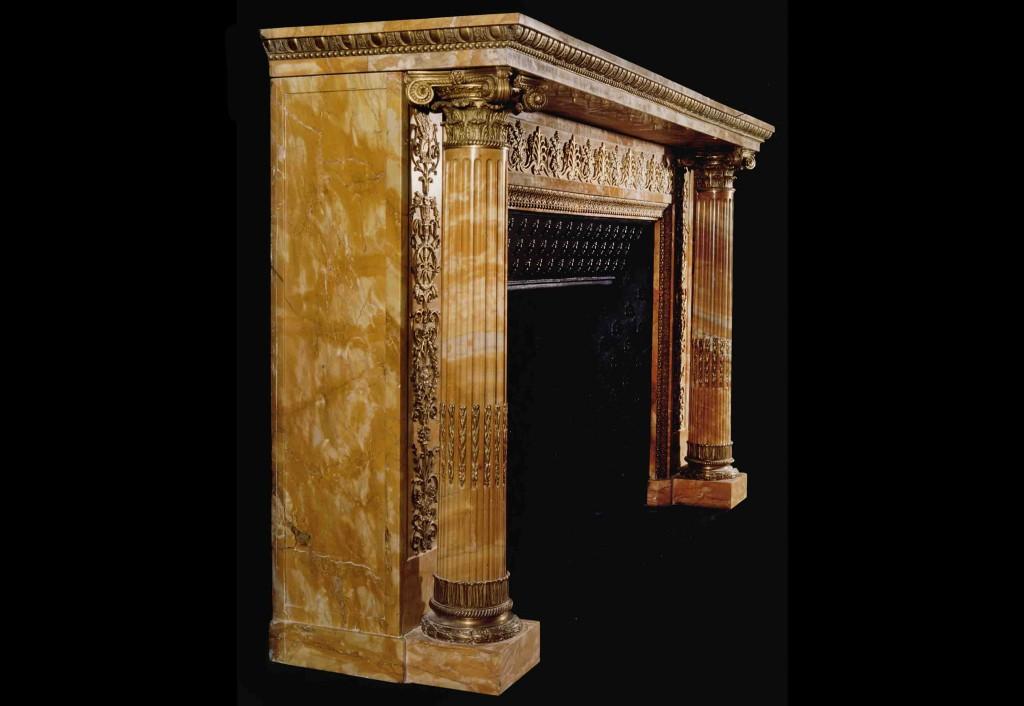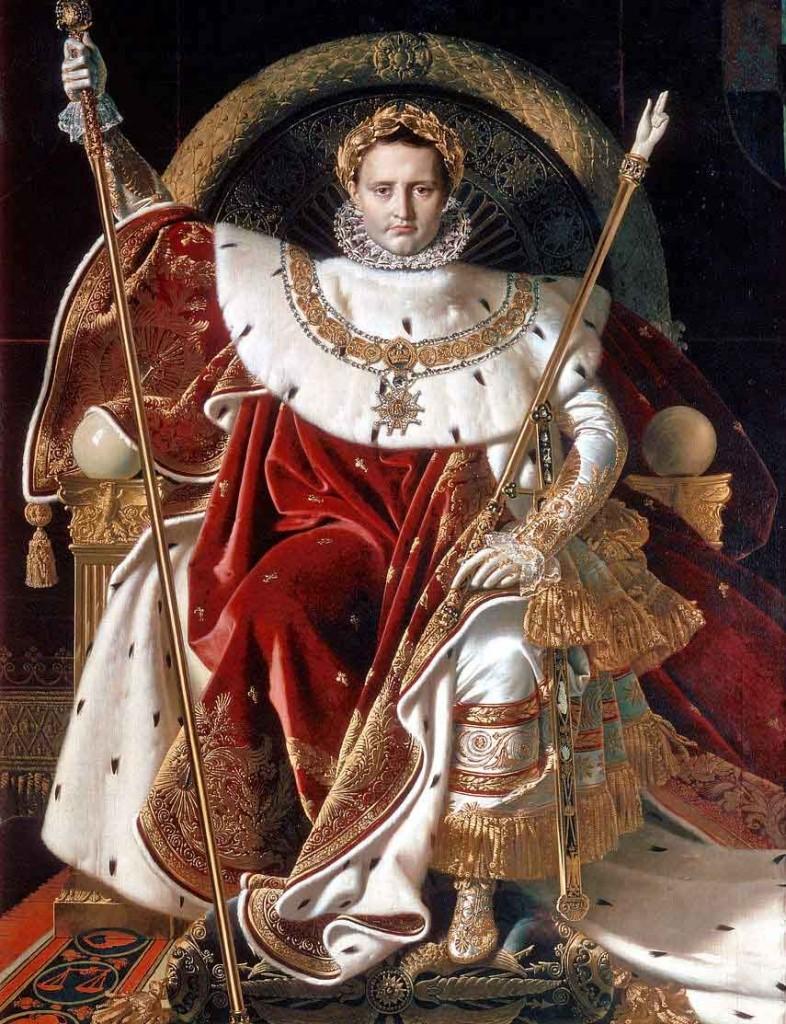Napoleon Bonaparte is a leader who's fame has reached near mythical proportions. He is one of the most known historical leaders and in his time was witness to, and the causation of, a number of political changes throughout Europe. The marks of his Empire can still be seen worldwide, and his reign marked a symbolic design style which is still immediately recognisable today. It is punctuated with symbols of war and victory often using classical forms and ornamentation, such as Corinthian columns, and was used to bring a feeling of grandeur to all decorative arts - everything from porcelain to interior installations such as stone and marble chimneypieces. Napoleon was born on August 15th 1769 on the Island of Corsica, shortly after it had been given over to French control. Descended from minor Italian nobility from the region of Tuscany, the Bonaparte's relative affluence afforded the young Napoleon an education not traditionally available to Corsicans at the time. He became the first Corsican to graduate from the Ecole Militaire in Paris. He graduated with the rank of second lieutenant in the artillery and rose steadily through the ranks of the military. The Napoleonic Era officially began in 1799 after he had already moved through the ranks and was given command of the French army in Italy. France was in political turmoil, already in the latter stages of revolution, and Napoleon returned to Paris to stage a coup d'etat and was elected First Consul. By 1804 he had been crowned Emperor before the Pope and would engage in a series of military conquests, largely successful until 1812 when he began to suffer a series of crushing military defeats, including the infamous Battle of Waterloo. He abdicated and relinquished the throne once again to the French monarchy on April 4th 1814. He was exiled to Saint Helena in 1815, where he died on 5th May 1821, supposedly of stomach cancer however this is still hotly debated. Napoleon's rule was punctuated with his own design style, set to emphasise the superiority of the French state, and idealize his rule. It began with the Consular period from 1799 when France was first overthrown and culminated with the Empire style which flourished between 1804 and 1814. (Although this would still be the primary mode of design expression well in to the 1820's.) Napoleon was intimately involved in the design decisions of the day, visiting textile workshops and porcelain factories personally to encourage their production in goods which would glorify France. Many design pieces would use symbols of the Empire in their creation, such as the Napoleonic bee which represented the empire as a symbol of immortality and resurrection, and was often used in conjunction with a laurel wreath as Napoleon's monogram.

The markers of the Empire style are all present on this stunning fireplace dating to the latter years of the Empire period. https://www.thornhillgalleries.co.uk/item/stock-number-2886/ Made from sumptuous Italian Siena marble, this antique fireplace perfectly exemplifies Napoleonic design tropes in its use of Corinthian columns, ormolu enhancement and prolific use of the Napoleonic bee on the cast iron interiors.

Compare this to the famous portrait of Napoleon on his Imperial Throne by the French painter Jean August Dominique Ingres and you can see the similar design choices that ranged through the decorative and visual arts of the Empire period, whether it was painting or interior design elements such as mantle pieces.

While Napoleon may be best known for his military agenda, he left behind a lasting legacy which changed the face of Europe. Borders shifted, he championed a modern secular education and was a great patron of the arts and sciences. Despite being a dictator, he enhanced equality under law, abolished feudalism and hereditary privilege, and his promotion of trade freedom encouraged financial growth. Because of this, his legacy is still strong to this day, and the images of his rule still as powerful as when they were first conceived.


